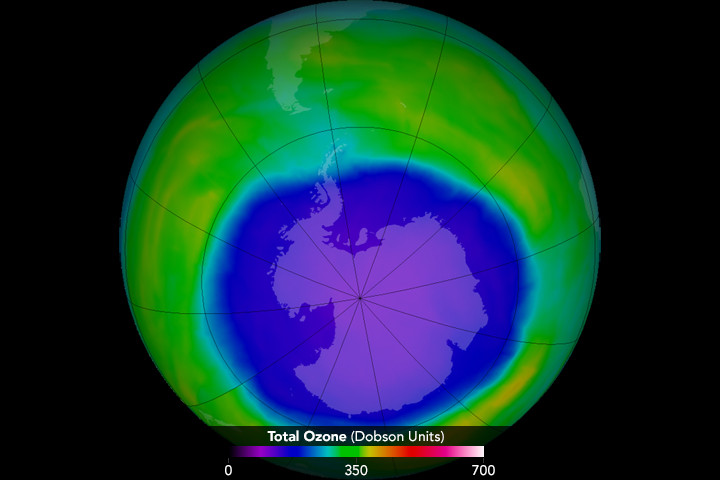Antarctica Ozone Hole Grows To Three Times The Size Of Brazil
Scientists believe that the volcanic eruption in Tonga last year could have caused the ozone hole to increase in size.

The ozone hole over Antarctica has become as big as three times the size of Brazil, according to Copernicus, the European Union's Earth observation programme.
The ESA claimed that the ozone hole reached approximately 10 million square miles (26 million square kilometres) in area on September 16, 2023, "making it one of the biggest ozone holes on record".
Scientists believe that the volcanic eruption in Tonga last year could have caused the ozone hole to increase in size, per the data provided by the European Space Agency's (ESA) Copernicus Sentinel-5P satellite.
The underwater volcano in the Kingdom of Tonga in the South Pacific erupted with massive force and triggered tsunami warnings. The eruption sent massive quantities of water vapour into the air.
'One of the biggest on record'
— David Ullrich (@DavidUllrich202) October 7, 2023
Ozone hole bigger than North America opens above Antarctica
The recently measured ozone hole over Antarctica, as detected by the Copernicus Sentinel-5P satellite, is one of the largest on record, according to a report from the European Space… pic.twitter.com/hQ7ASVwv9J
"The water vapour could have led to the heightened formation of polar stratospheric clouds, where chlorofluorocarbons (CFCs) can react and accelerate ozone depletion," Antje Inness, Copernicus Atmosphere Monitoring Service scientist, said in a statement.
It also needs to be noted that the size of the ozone hole fluctuates between August and October. It increases gradually and reaches its peak in mid-September and mid-October.
"Our operational ozone monitoring and forecasting service shows that the 2023 ozone hole got off to an early start and has grown rapidly since mid-August," added Inness.
The big picture:
Ozone is a layer of gas in the atmosphere that protects life from harmful ultraviolet rays. Substances called chlorofluorocarbons (CFCs) had been contributing to the depletion of this layer.
It was in 1985 that scientists from the British Antarctic Survey first reported observations of large losses of ozone over Antarctica.
With wind currents sweeping the CFCs towards the poles, the effect was more pronounced there as the polar vortex trapped the chemicals, which accumulated over time to high concentrations.
As the sun shines for long periods of the day, chlorine reacts with ultraviolet rays, destroying ozone on a massive scale of up to 65 per cent, creating the hole seen by the BAS team.
A hole in the ozone leaves people vulnerable to the harmful effects of ultraviolet (UV) rays as the sun shines brighter over these regions. Despite the seasonal increase, the ozone hole over Antarctica has been decreasing in size overall.
Two years after the discovery of the ozone hole over Antarctica. Nations came together to sign the Montreal Protocol, which regulates ozone-depleting compounds. It is a universally ratified United Nations treaty that went into effect in 1989 and has resulted in the complete phasing out of CFC production.
The treaty has been so effective that former UN Secretary General Koffi Annan once described it as the "single most successful international agreement to date". A United Nations report says that the layer is on track to recover within decades.
Ozone hole over the tropics:
Despite the perceived progress, a massive ozone hole was found over the tropical region last year, which is at least seven times larger than the Antarctic ozone hole.
The discovery was made by Professor Qing-Bin Lu, a scientist from the University of Waterloo in Ontario, Canada. He found that the hole has been there for more than 30 years and covers almost all of the planet's tropical region.
Unlike the better-known Antarctic ozone hole, which opens up every year in spring, the recently discovered ozone hole is a year-round gap in the planet's ozone layer. It has been revealed to be in the lower stratosphere over the tropics. It could affect 50 per cent of the world's population.
The stratosphere is the layer of the atmosphere that sits 6 to 31 miles above the troposphere, which is the lowest layer and where weather happens. The lower portion of the stratosphere is where a major chunk of the ozone is, and it is here that a good part of UV absorption happens.
© Copyright IBTimes 2025. All rights reserved.






















